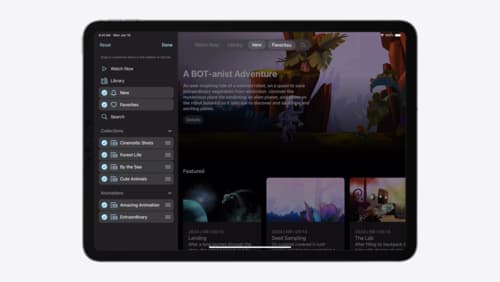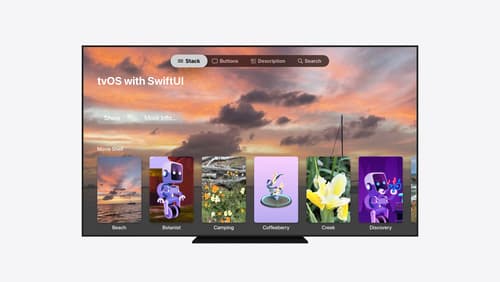how do I build a table view controller
Asked on 2024-07-30
1 search
To build a table view controller in SwiftUI, you can use the List view, which is a powerful and flexible way to create table-like interfaces. Here are some key points and examples from the WWDC sessions that can help you get started:
-
Using
ListandForEach:- In the session Demystify SwiftUI containers, it is explained how to use
ForEachwithin aListto create data-driven lists. This allows you to dynamically generate rows based on your data.
struct ContentView: View { let items = ["Item 1", "Item 2", "Item 3"] var body: some View { List { ForEach(items, id: \.self) { item in Text(item) } } } } - In the session Demystify SwiftUI containers, it is explained how to use
-
Combining Static and Dynamic Content:
- The same session also demonstrates how to combine static and dynamic content within a single list, which can be useful for creating headers or sections within your table view.
struct ContentView: View { let items = ["Item 1", "Item 2", "Item 3"] var body: some View { List { Text("Header") ForEach(items, id: \.self) { item in Text(item) } } } } -
Customizing Rows:
- You can customize the appearance of each row by using custom views. This is shown in the session Demystify SwiftUI containers, where custom views are used within a
ForEach.
struct CustomRow: View { let item: String var body: some View { HStack { Text(item) Spacer() Image(systemName: "star") } .padding() } } struct ContentView: View { let items = ["Item 1", "Item 2", "Item 3"] var body: some View { List { ForEach(items, id: \.self) { item in CustomRow(item: item) } } } } - You can customize the appearance of each row by using custom views. This is shown in the session Demystify SwiftUI containers, where custom views are used within a
-
Advanced Customization and Control:
- For more advanced customization, such as creating unique experiences or using low-level APIs, you can refer to the session SwiftUI essentials. This session covers how to build custom control styles and use advanced features like canvas for high-performance drawing.
struct CustomControl: View { var body: some View { // Custom control implementation } } struct ContentView: View { var body: some View { List { CustomControl() // Other rows } } }
By leveraging these techniques, you can build a flexible and powerful table view controller in SwiftUI. For more detailed information, you can explore the sessions mentioned above.

SwiftUI essentials
Join us on a tour of SwiftUI, Apple’s declarative user interface framework. Learn essential concepts for building apps in SwiftUI, like views, state variables, and layout. Discover the breadth of APIs for building fully featured experiences and crafting unique custom components. Whether you’re brand new to SwiftUI or an experienced developer, you’ll learn how to take advantage of what SwiftUI has to offer when building great apps.

Elevate your tab and sidebar experience in iPadOS
iPadOS 18 introduces a new navigation system that gives people the flexibility to choose between using a tab bar or sidebar. The newly redesigned tab bar provides more space for content and other functionality. Learn how to use SwiftUI and UIKit to enable customization features – like adding, removing and reordering tabs – to enable a more personal touch in your app.

Migrate your TVML app to SwiftUI
SwiftUI helps you build great apps on all Apple platforms and is the preferred toolkit for bringing your content into the living room with tvOS 18. Learn how to use SwiftUI to create familiar layouts and controls from TVMLKit, and get tips and best practices.
